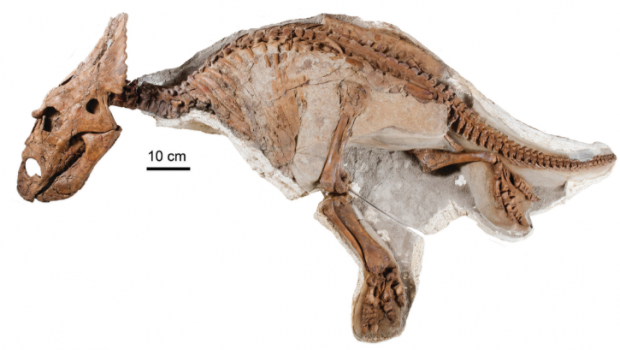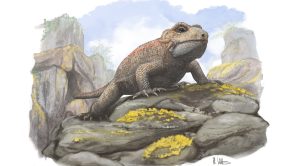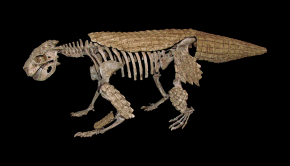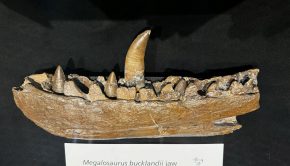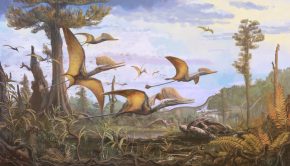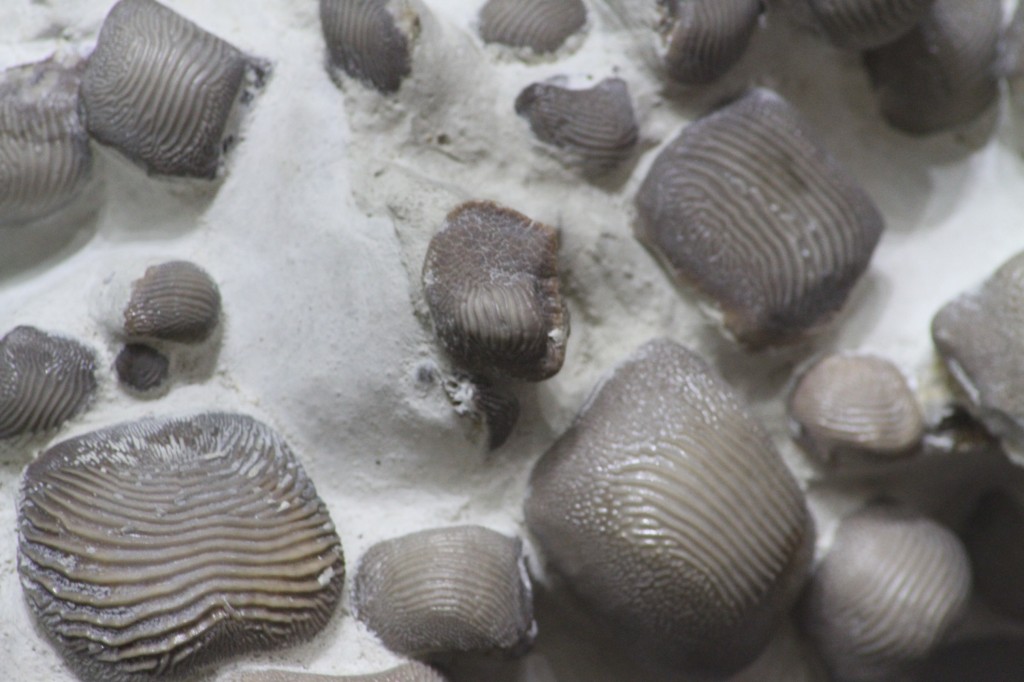Baby Chasmosaurus
Juvenile dinosaurs are less common than adults, and typically not as well preserved due to the fact that their bones are often not fully formed (many of them are still cartilaginous) or fused (sutures are still visible). However, they are extremely important in understanding animal growth including features that may be important in aspects of sexual selection.
Last week, the well-known baby Chasmosaurus specimen (nicknamed ‘Baby’) was finally properly described by Phil Currie and colleagues. This specimen has been known to the scientific community and the public since 2013, but it has now been formally published. It is particularly significant because of it’s preservation (it is nearly complete, missing only it’s front legs, and some tail vertebrae), the fact that it is the smallest ceratopsid (horned-dinosaur) known to date, and what it has shown about using juveniles in phylogenetic analyses to determine species relationships.
Lead author Phil Currie had this to say about the find: “Horned dinosaurs (ceratopsids) are relatively common in Alberta. Many skulls and/or skeletons of many species have been collected over the years. And there are bonebeds composed almost entirely of ceratopsians. Some of these bonebeds are estimated to have the remains of thousands of animals that were caught in massive, catastrophic killing events like floods, hurricanes and droughts. Nevertheless, before 2010 there was not a single ceratopsid skeleton in all of North America that was less than two meters long and represented by more than a dozen bones.
Every year since 1976 I return to Dinosaur Provincial Park to look for and collect dinosaur skeletons. I am never disappointed by the results, and am always anxious to return again. In 2010, we were camped on the north side of the Red Deer River near a century-old, abandoned log house know as Happy Jack’s. After climbing up and down slippery hillsides and cliffs for several hours without any noteworthy results, I spotted a fossil bone coming out of a steep slope just above my head. The shape was complicated, with a scalloped edge that suggested the back edge of a ceratopsid skull. But it was too small and delicate, so I convinced myself (so as not to be disappointed) that it might also be the edge of a fossilized turtle shell. It only took about fifteen minutes to confirm that it was a tiny squamosal of a ceratopsid. I had found tiny squamosals before, and they were always isolated because the skull bones of young dinosaurs were only loosely knit together and fell apart soon after death. But in this case, the squamosal was connected to the jugal, or cheek bone. At 10:48, I stood back long enough to take the first picture of the skull. It was complete from the tip of the snout to the back of the frill! I already knew that I had made the find of the season…the most complete skull of a baby ceratopsid that had ever been found. By the end of the day, we knew that the lower jaw and the front of the skeleton were also present. It took two weeks for us to complete the excavation. Because the animal was small, the quarry was small and only two people could work on it most of the time.
One can learn a lot from a juvenile skeleton. Body proportions change during growth in virtually all animals (think of the large eyes and head of a human baby for example). We now know that the spectacularly large and distinctive frill of an adult Chasmosaurus was rather nondescript in the juveniles. Body proportions cannot be deduced from isolated bones. However, by having the two ends of the spectrum, animals that are 1.5 m long versus 6 m long adults, then calculations can be made to determine body proportions of any individuals at any size or age. This in turn can be used to determine the body size represented by any isolated bones. In this way we can learn something about population and age structure in herds of ceratopsian dinosaurs that are represented in the great ceratopsian bonebeds of Alberta.”
If you want to hear more about this find and other dinosaur finds from Alberta, listen to our episode with Phil Currie on dinosaurs from Alberta!
Image from Currie et al. 2016 (In Press).

